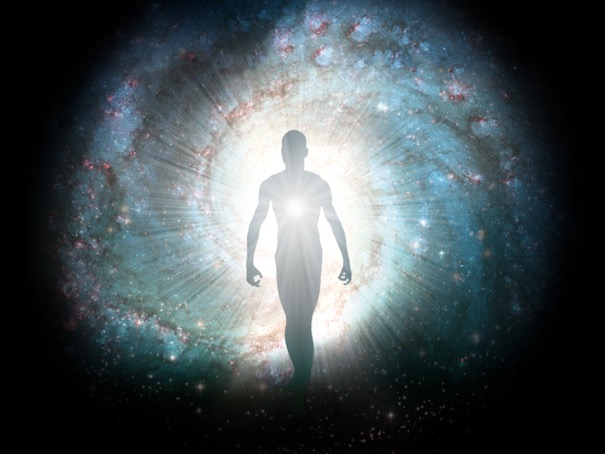Somewhere in the stillness of a quiet morning, a woman laces up her running shoes. Her legs ache from yesterday’s workout, the air is cold, and her bed still whispers for her return. But she goes. Miles pass beneath her feet not because she must—but because something deep inside her insists she should.
In another part of the world, a young artist stays up through the night, drenched in moonlight and colors. Her fingers are stained with paint, her eyes heavy, but she keeps sketching. The canvas is not for money or fame. It’s for something else—something invisible, powerful, and deeply personal.
What is this force that pulls people forward even when it’s hard, thankless, or uncertain? What fuels action, drives ambition, and sustains effort against all odds?
It is motivation. Elusive, essential, and often misunderstood.
From the hunger that drove early humans to hunt and survive, to the drive that compels someone today to launch a startup, write a novel, or protest injustice, motivation is the quiet engine behind every leap of human behavior. But the psychology of motivation is not a straight road. It twists through biology, emotion, identity, and even trauma. To understand what really drives us, we must dive into the heart of the human mind—where desire and fear dance in tandem, and every action is a story of something deeper.
More Than Just Willpower
Most people think of motivation as something like willpower—a mysterious energy that you either have or don’t. But science tells a different story.
Motivation isn’t a single thing. It’s not a fixed trait or a magical switch that turns on at 6 a.m. It’s a dynamic process—born from the interplay of biology, emotion, memory, and meaning. It’s shaped by the brain’s chemistry, the stories we believe, the environments we live in, and the people we become.
The modern understanding of motivation draws heavily from both behavioral psychology and neuroscience. At its core, motivation is the reason for our actions—the why behind every choice we make. But that why is not always conscious. Sometimes, we chase goals we don’t even understand. Sometimes, we run from things rather than toward them. And sometimes, we’re stuck in limbo, unable to act at all.
Why?
Because the systems that govern motivation are not simple. They are layered, often contradictory, and deeply human.
The Push and Pull Inside the Brain
At the center of motivation lies the brain’s reward system. When you set a goal and take a step toward it—whether it’s sending a job application, studying for an exam, or texting someone you love—your brain rewards you with dopamine, the neurotransmitter of anticipation and pleasure. Dopamine doesn’t just flood your brain when you achieve something; it activates in anticipation of reward, propelling you forward.
This is why dreams and goals are so powerful—they create dopamine-fueled circuits in the brain that make us feel alive. That feeling when you’re planning your next big idea, or imagining your future success? That’s dopamine speaking. It’s a whisper from your brain saying: “Keep going. Something good is coming.”
But motivation isn’t only about reward. It’s also about fear, pain, and avoidance. Another ancient part of the brain—the amygdala—triggers us to act when something threatens our safety or identity. This is why people procrastinate: not because they’re lazy, but because the task in front of them triggers anxiety, fear of failure, or perfectionism. The mind chooses momentary relief over long-term gain.
So while dopamine pulls us forward, fear pushes us to avoid. True motivation often lies in the tug-of-war between those two forces. And that war is shaped not only by the brain—but by the stories we carry.
Needs, Meaning, and Maslow’s Mountain
In the mid-20th century, psychologist Abraham Maslow offered a new way to understand human motivation. He proposed that people are driven by a hierarchy of needs, starting with the most basic—like food, safety, and sleep—and moving toward higher needs like love, esteem, and eventually, self-actualization.
At the base of the pyramid, motivation is about survival. Hunger, fear, and loneliness light fires under our feet. But as those needs are met, we begin to chase something less tangible: purpose, identity, legacy.
This is why a wealthy entrepreneur might suddenly abandon their company to work for a nonprofit. It’s not irrational—it’s motivational evolution. When people have enough to live, they begin to crave something worth living for.
But real life rarely follows the neat shape of a pyramid. People chase meaning even in poverty. Others feel empty even with everything money can buy. Maslow’s mountain is not climbed step by step—it’s traversed in zigzags, often through heartbreak, failure, and discovery.
What really drives us is not a checklist. It’s meaning.
And meaning is personal.
Intrinsic vs. Extrinsic: The Two Rivers of Drive
Another way psychologists understand motivation is by distinguishing between intrinsic and extrinsic sources.
Intrinsic motivation is born from within. It’s the joy of painting just to paint. The curiosity that makes you read late into the night. The satisfaction of solving a puzzle because you love the challenge.
Extrinsic motivation, on the other hand, comes from outside: money, grades, approval, status. It’s the motivation to win a medal, get a promotion, or avoid punishment.
Both types are powerful, but they function differently. Intrinsic motivation is usually more sustainable. It generates flow—the mental state where you lose track of time because you’re so immersed. It’s driven by autonomy, mastery, and purpose.
Extrinsic motivation can be effective, especially for short-term goals, but it often fades when the reward is gone. Worse, it can sometimes crowd out intrinsic motivation. Studies have shown that when people are paid to do something they already enjoy, they sometimes stop enjoying it. The task becomes transactional, not joyful.
This doesn’t mean external rewards are bad. It means that for long-term drive, we need to connect our goals to something deeper than outcome. We need to feel like our actions matter—not just to others, but to ourselves.
The Role of Identity in What We Do
Here’s a quiet truth most people don’t realize: we are most motivated to do the things that align with who we believe we are.
If you see yourself as a writer, you will write. If you believe you’re healthy, you’re more likely to exercise. If you think of yourself as resilient, you will push through hard times.
This is why identity-based habits are more powerful than outcome-based ones. It’s not about running to lose ten pounds. It’s about becoming someone who moves because movement is part of who they are.
The human mind fights to maintain consistency between behavior and identity. This is why people sometimes sabotage themselves—not because they’re weak, but because success would challenge the story they’ve lived with for too long.
Someone who has always seen themselves as a failure may unconsciously resist achievement, because it feels like a betrayal of their past. Someone who grew up being told they weren’t good enough may struggle to believe they deserve joy.
To truly change our motivation, we sometimes have to change our self-image. And that is some of the hardest work we’ll ever do.
Motivation Waxes, Wanes, and Wanders
Contrary to motivational posters and social media soundbites, no one feels motivated all the time. Motivation is not a constant fire—it flickers. It dims. It disappears and reappears without warning.
Some days, you wake up ready to conquer the world. Other days, brushing your teeth feels like a victory. That’s not a moral failure. It’s biology, psychology, and life.
Emotions affect motivation. So do sleep, nutrition, hormones, stress, and trauma. And for many people, especially those with anxiety or depression, motivation can feel like a foreign language they once spoke but no longer understand.
This is why discipline matters—not the harsh, drill-sergeant kind, but the compassionate, curious kind. Discipline is not about pushing through at all costs. It’s about learning how to show up, even when motivation doesn’t. It’s about building habits that don’t rely on mood. And it’s about learning to rest without guilt.
Because sometimes, the most motivated thing you can do is stop, breathe, and begin again tomorrow.
The Culture of Hustle and the Myth of Constant Drive
Modern society often glorifies hustle. We’re told that the most successful people wake at dawn, never take breaks, and chase their dreams with relentless fire. Productivity is worshipped. Burnout is ignored.
But real motivation isn’t about running nonstop. It’s about knowing why you run, where you’re going, and who you become along the way.
Burnout happens not just from doing too much—but from doing too much without meaning. Without rest. Without joy.
The truth is, motivation is deeply personal. Some people are driven by service. Others by art. Some by competition, others by community. There’s no universal formula. The question isn’t “How do I get motivated like them?” It’s “What matters to me enough that I’d do it even when it’s hard?”
When you find that, motivation isn’t something you chase. It’s something that catches you.
Healing, Trauma, and the Hidden Drivers
For some, the road to motivation is blocked not by laziness but by wounds.
Trauma—especially childhood trauma—can fracture motivation. When love was conditional, or safety unpredictable, the brain learns to protect, not to strive. People in survival mode don’t think about long-term goals. They think about getting through the next hour.
This is why healing matters.
Therapy, support, and self-compassion can slowly untangle the knot between safety and achievement. When people feel safe, seen, and loved—not for what they do, but for who they are—motivation begins to bloom. It doesn’t rush. It roots.
Sometimes, what drives us is not ambition, but the hunger to prove our worth. But when we realize we don’t have to earn love, something shifts. We begin to choose differently. We begin to live from joy, not fear.
That’s when motivation becomes not a weapon, but a gift.
What Really Drives Us
So what really drives us?
Not one thing, but many.
We are driven by needs and by meaning. By dreams and by pain. By who we are and who we long to become.
We are moved by dopamine and by memory. By fear and by freedom. By identity, purpose, and sometimes, just the simple desire to matter.
Motivation is not a flame you force to burn brighter. It’s a fire you learn to tend—patiently, with care, and with truth.
The next time you wonder why you can’t seem to get going—or why you’re suddenly on fire with purpose—look deeper. Ask yourself not just what you want to do, but what you believe, what you need, and who you are.
That’s where motivation lives.
And once you know where it lives, you can visit it again and again—not as a stranger, but as a friend who knows the way forward.






